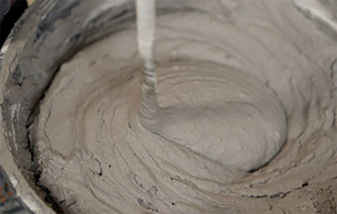
ធ្នូ . 11, 2024 03:55 Back to list
Understanding the Significance of HPMC in Various Applications and Industries
Understanding HPMC Meaning and Applications
Hydroxypropyl Methylcellulose (HPMC) is a versatile and widely used compound in various industries, notably in pharmaceuticals, food, construction, and personal care products. This article aims to explore the meaning, properties, and applications of HPMC, illustrating its significance in everyday life.
What is HPMC?
HPMC is a semi-synthetic polymer derived from cellulose, which is a natural polymer obtained from plant cell walls. It is produced by treating cellulose with specific chemicals, primarily propylene oxide and methyl chloride. The result is a white, odorless, and tasteless powder that has the ability to form a gel-like consistency when mixed with water. The unique structure of HPMC provides it with various functional properties, making it useful across multiple sectors.
Chemical Properties
HPMC is classified as a cellulose ether, and its properties can be tailored by varying the degree of substitution (the level of replacing hydroxyl groups on the cellulose molecule with hydroxypropyl and methyl groups). This customization enables manufacturers to produce HPMC with different viscosity levels, solubility, and gel formation properties, catering to specific application needs. Importantly, HPMC is non-toxic and non-allergenic, making it an ideal choice for many formulations, especially in pharmaceuticals and food.
Applications of HPMC
1. Pharmaceutical Industry HPMC is extensively used in the pharmaceutical sector as a binder, thickener, and film-forming agent. It plays a crucial role in the formulation of oral and topical drug delivery systems. For instance, HPMC is often used in creating controlled-release tablets, where it helps regulate the release of the active ingredients over time. Its ability to form hydrogels also makes it suitable for ocular (eye) preparations and other liquid formulations.
hpmc meaning

2. Food Industry In the food industry, HPMC serves as a thickening agent, emulsifier, and stabilizer. It is commonly used in gluten-free products to improve texture and moisture retention. Moreover, HPMC is utilized in sauces, dressings, and baked goods, enhancing their smoothness and consistency. Its ability to form a gel at high temperatures allows for the development of various food products, including dairy alternatives and plant-based items.
3. Construction Industry HPMC is also significant in construction, where it is used as a polymer additive in cement, mortar, and plaster. It improves the workability and water retention of these materials, leading to better plastering and adhesion properties. This results in a smoother finish and enhances the durability of the products.
4. Personal Care Products In the personal care sector, HPMC can be found in lotions, creams, shampoos, and other cosmetic products. Its thickening and stabilizing properties help in creating desirable textures and enhancing the overall performance of these products. It serves as a binding agent in certain cosmetic formulations, ensuring uniform distribution of ingredients.
Environmental Considerations
One of the attractive aspects of HPMC is its environmentally friendly profile. As a derivative of cellulose, a renewable resource, it aligns with the growing demand for sustainable and eco-friendly materials. Additionally, HPMC is biodegradable, making it a favorable alternative to synthetic polymers and additives that may pose environmental risks.
Conclusion
In conclusion, Hydroxypropyl Methylcellulose (HPMC) is a multifunctional compound that plays a vital role across various industries. Its unique properties, such as water solubility, thickening capability, and film-forming characteristics, make it invaluable in pharmaceuticals, food, construction, and personal care products. Given its safety profile and environmental benefits, HPMC is likely to remain a preferred choice for manufacturers seeking efficient and sustainable solutions. As industries continue to innovate and evolve, the significance of HPMC is expected to grow, impacting our daily lives in numerous ways.
-
Unlocking the Benefits of HPMC Products: A Gateway to Versatile Applications
NewsAug.07,2025
-
Unleashing the Potential of HPMC Ashland: A Comprehensive Look
NewsAug.07,2025
-
Tile Bonding Cellulose: The Key to Superior Adhesion and Durability
NewsAug.07,2025
-
Hydroxypropyl Methylcellulose Powder: The Versatile Component in Modern Pharmaceuticals
NewsAug.07,2025
-
Hydroxyethyl Cellulose: The Versatile Solution for Various Industries
NewsAug.07,2025
-
Hydroxyethyl Cellulose (HEC): The Versatile Polymer for Various Applications
NewsAug.07,2025







